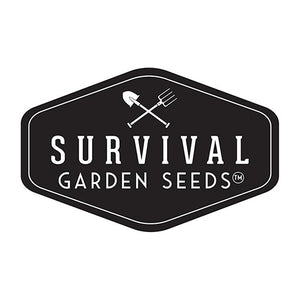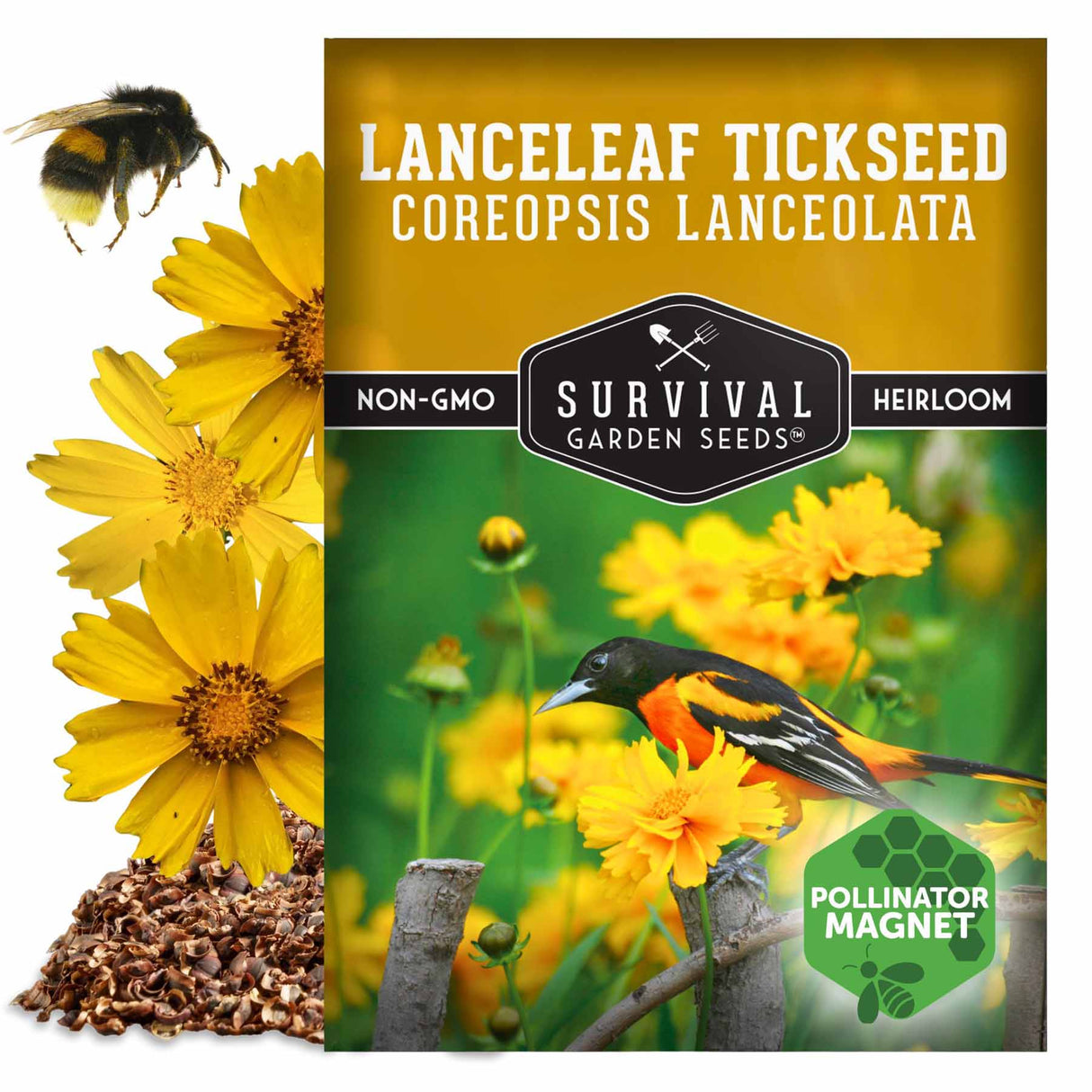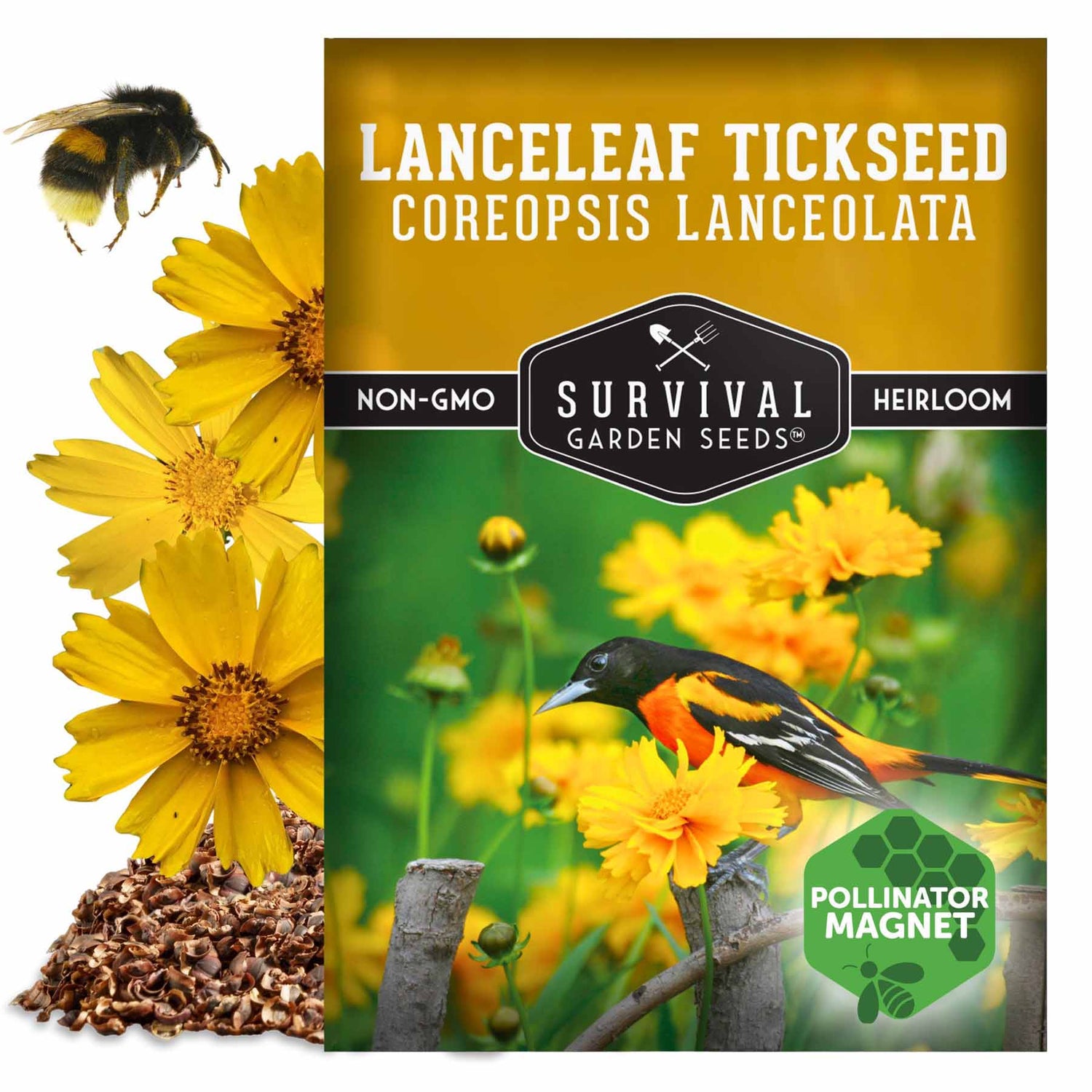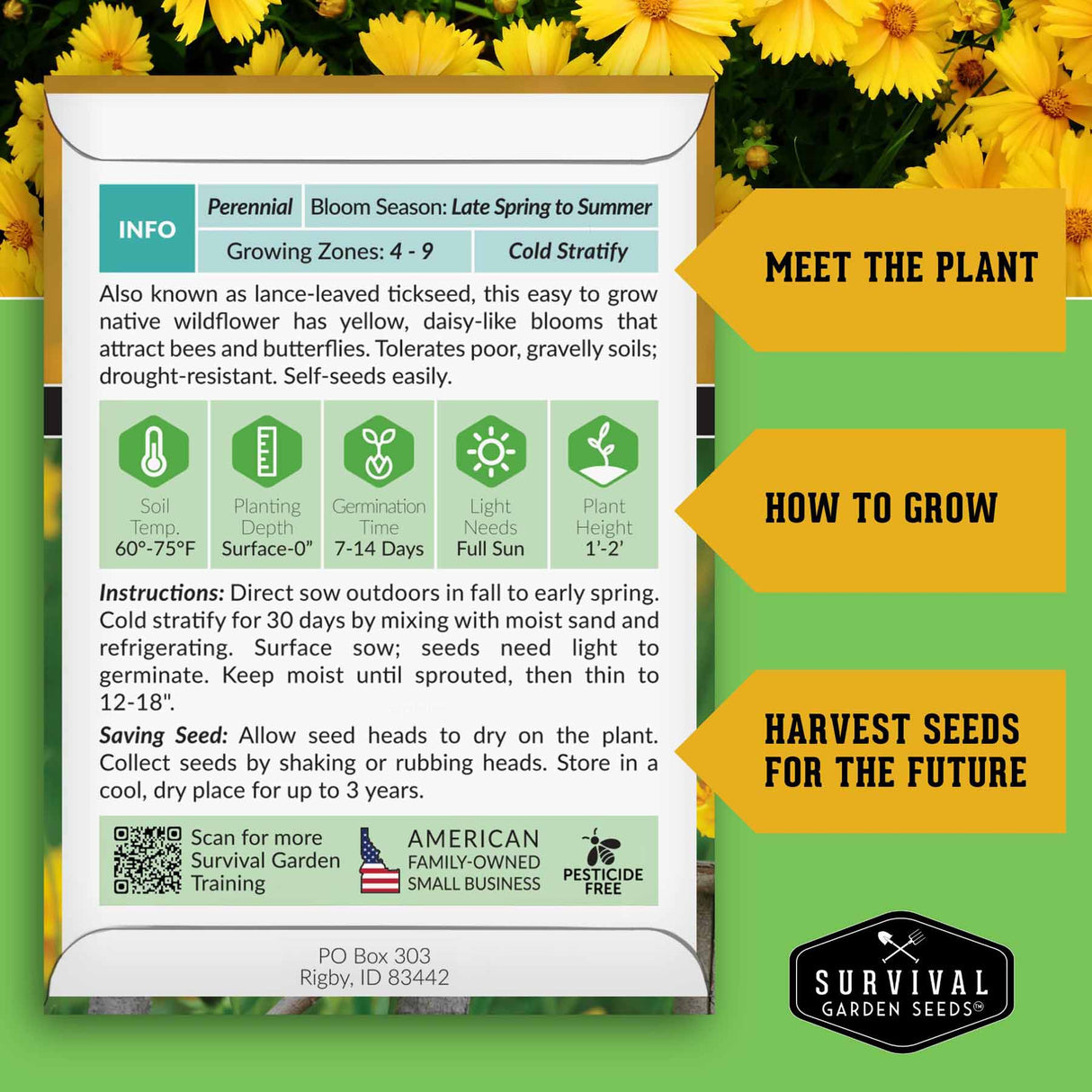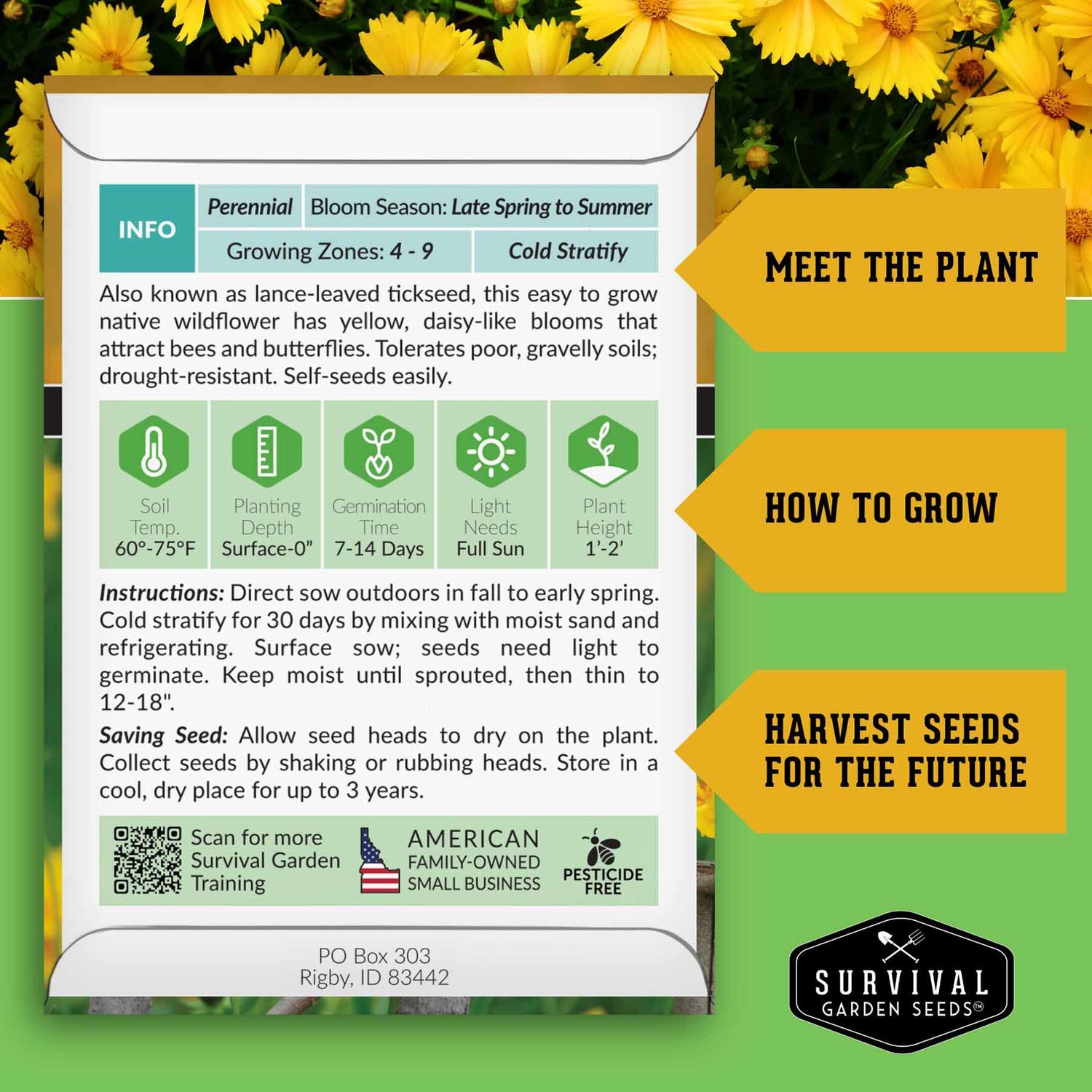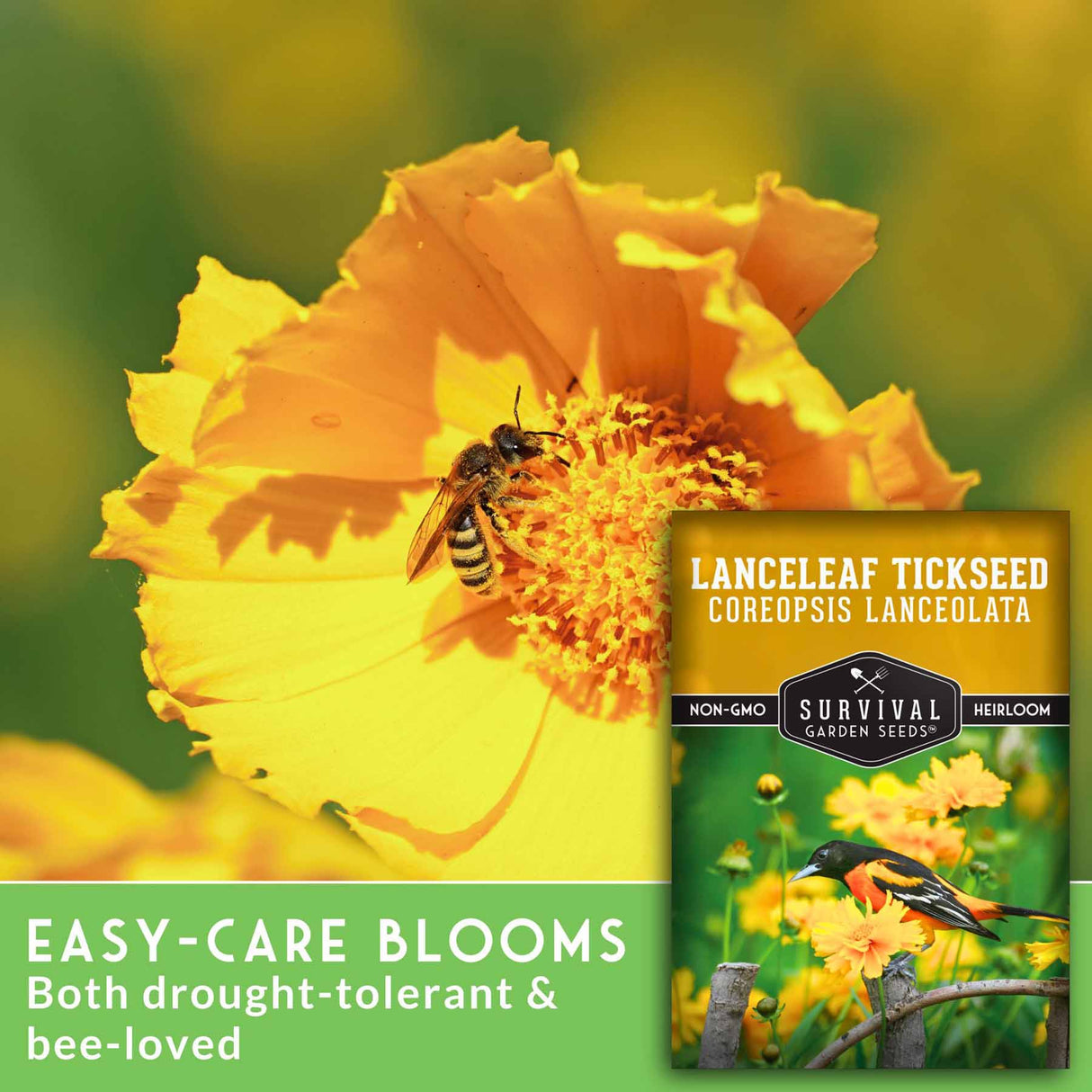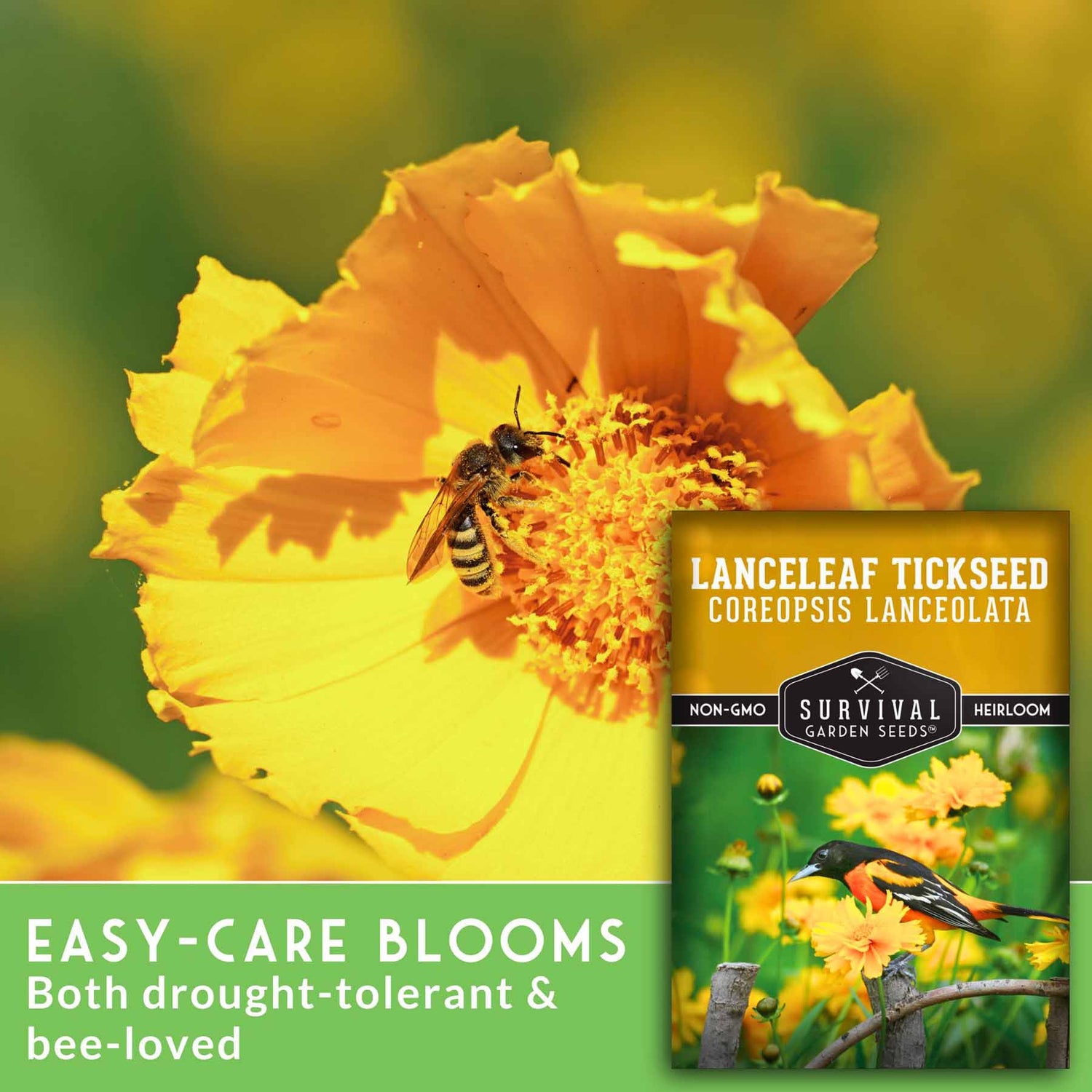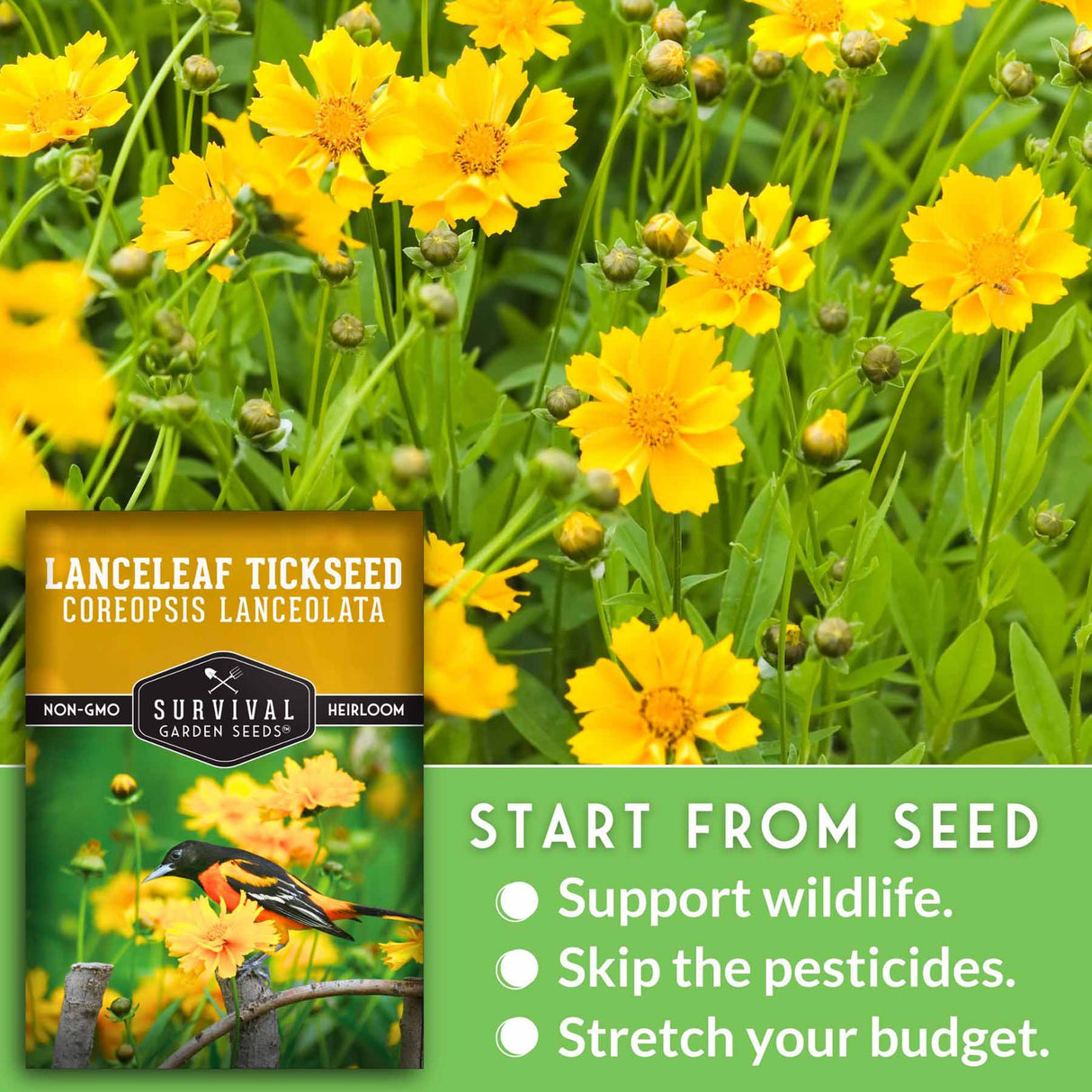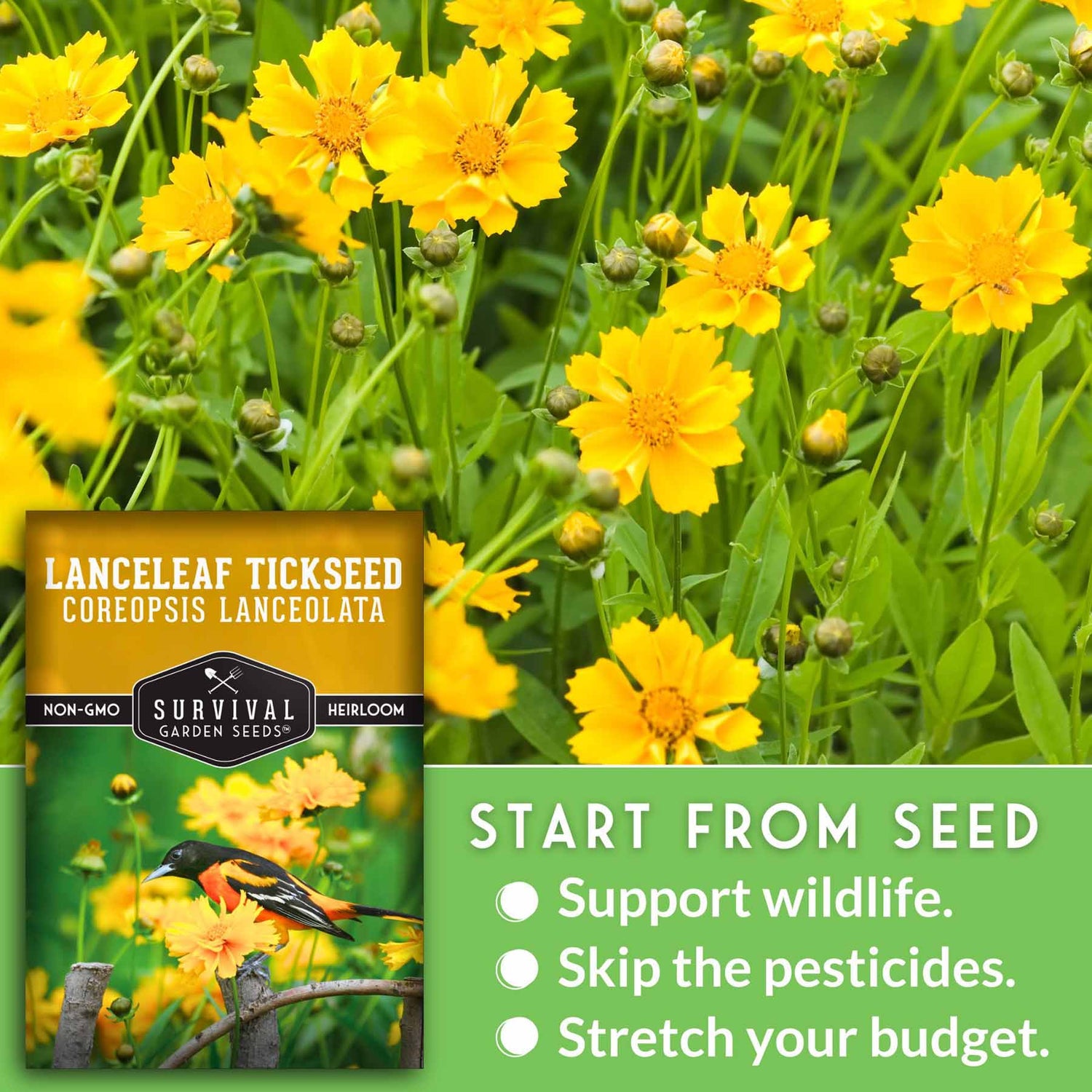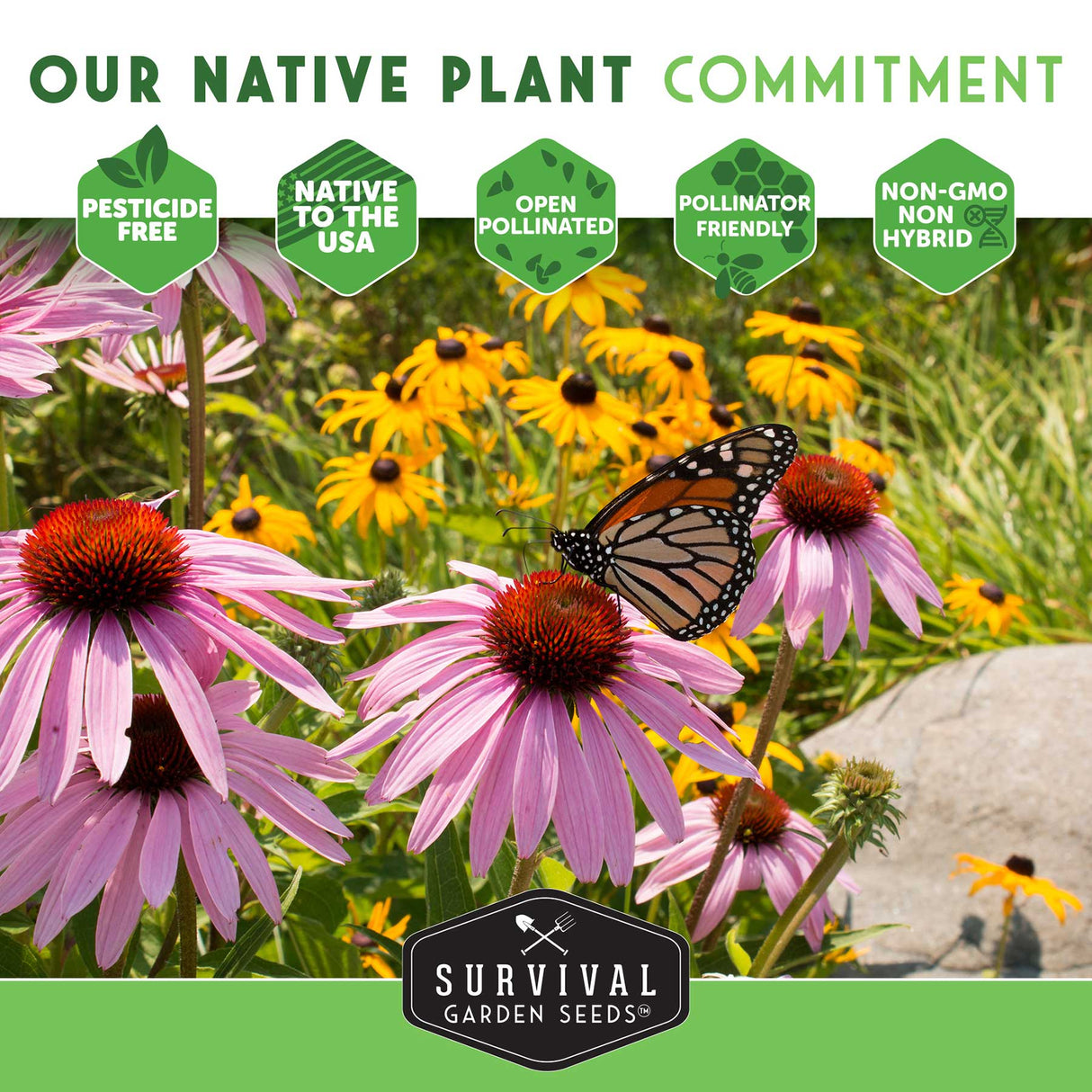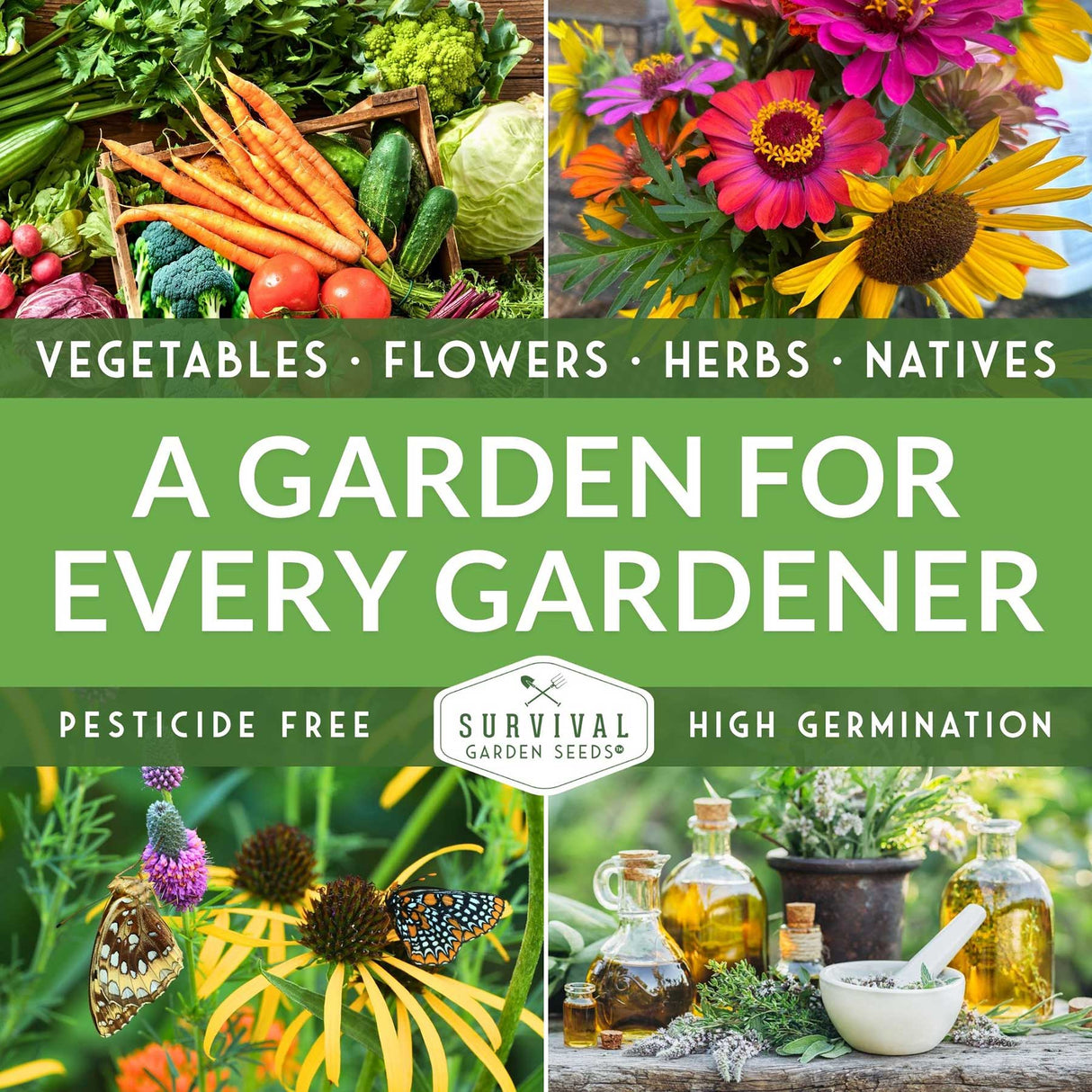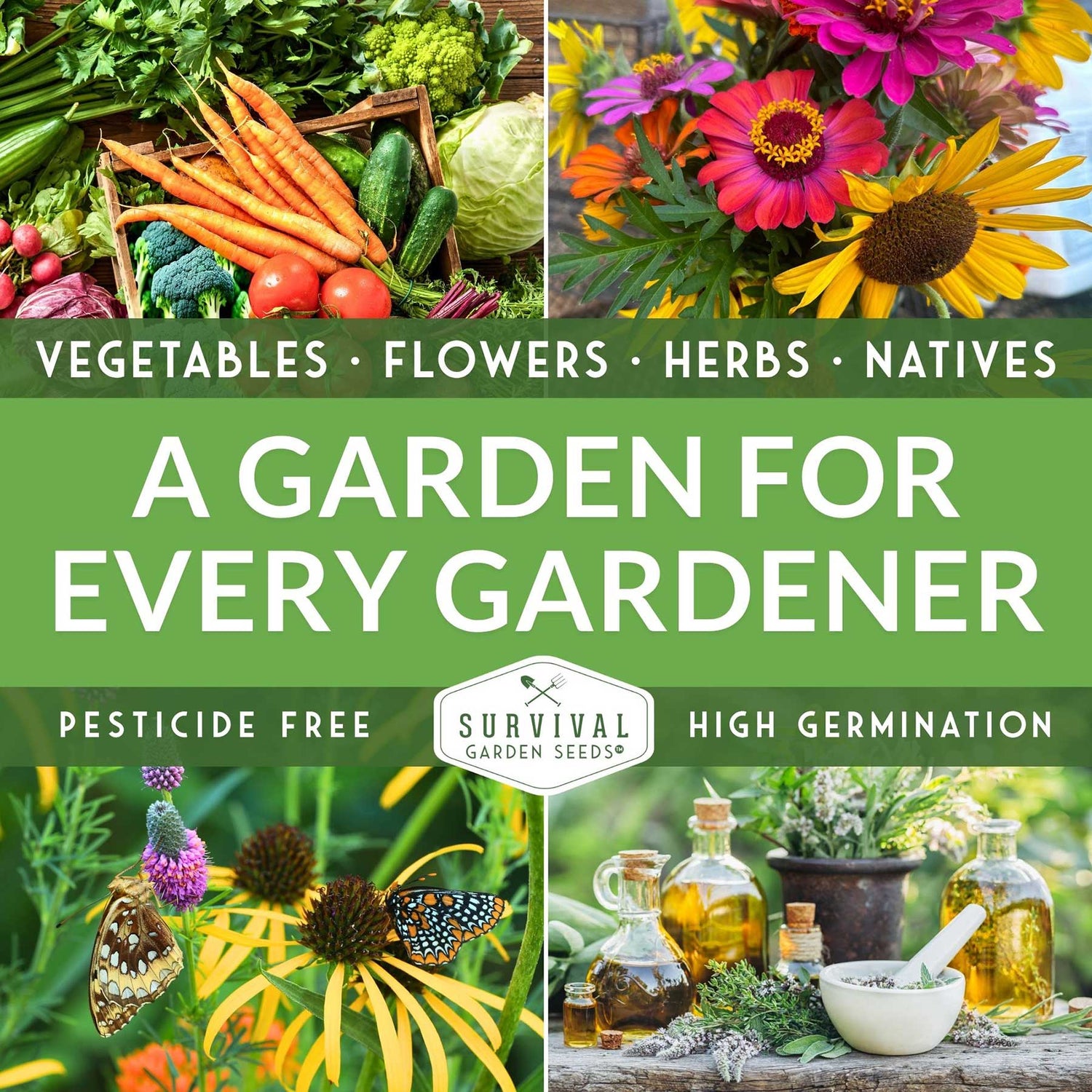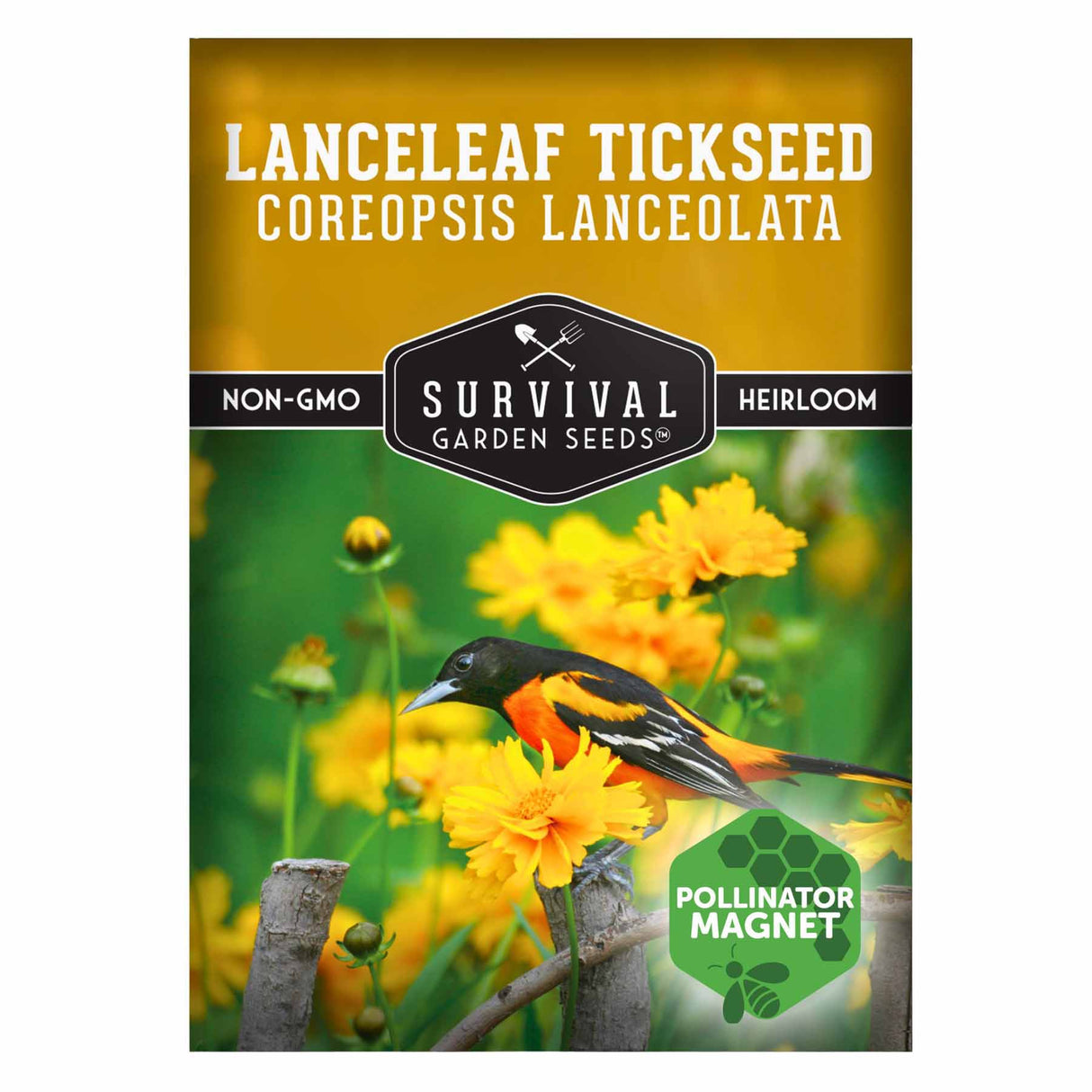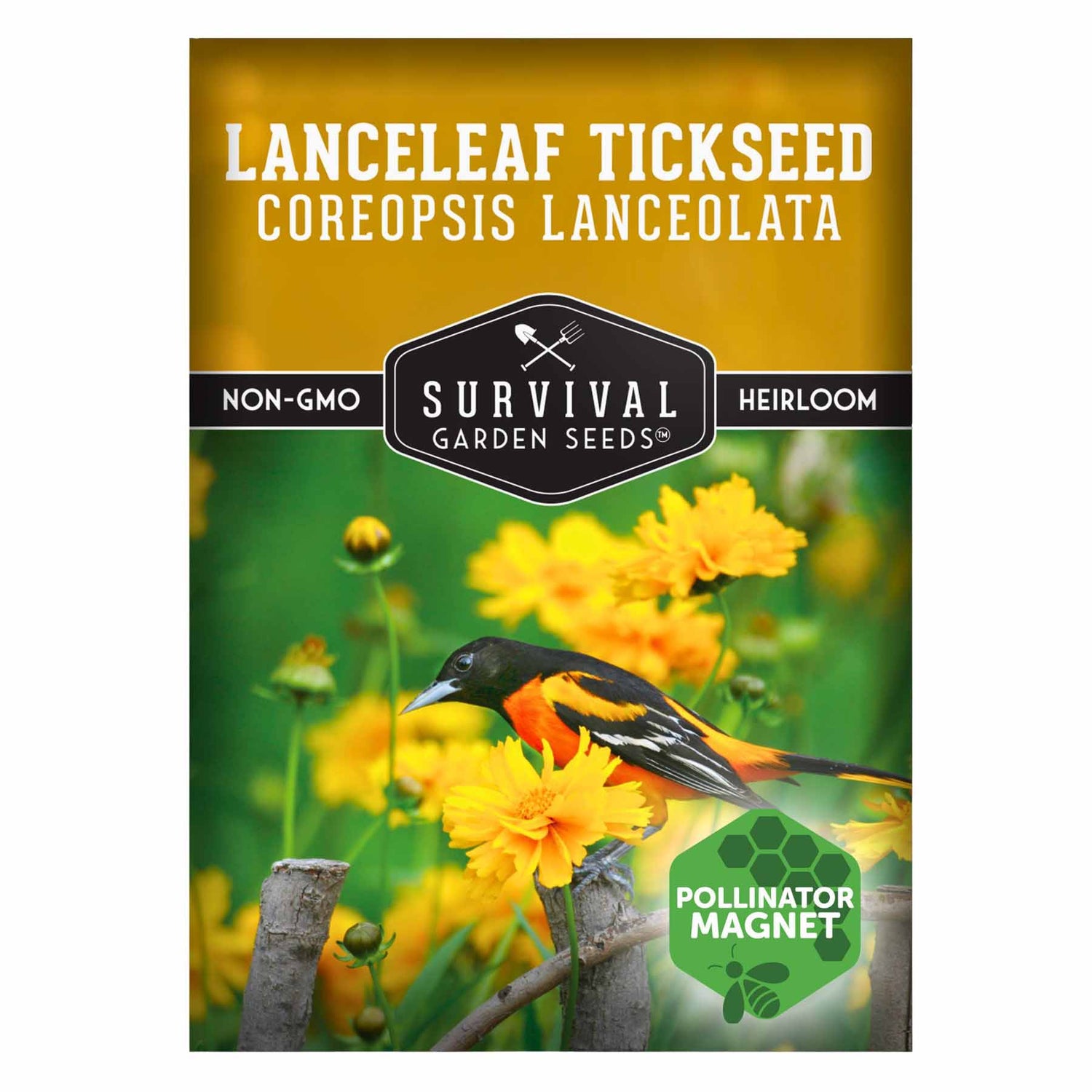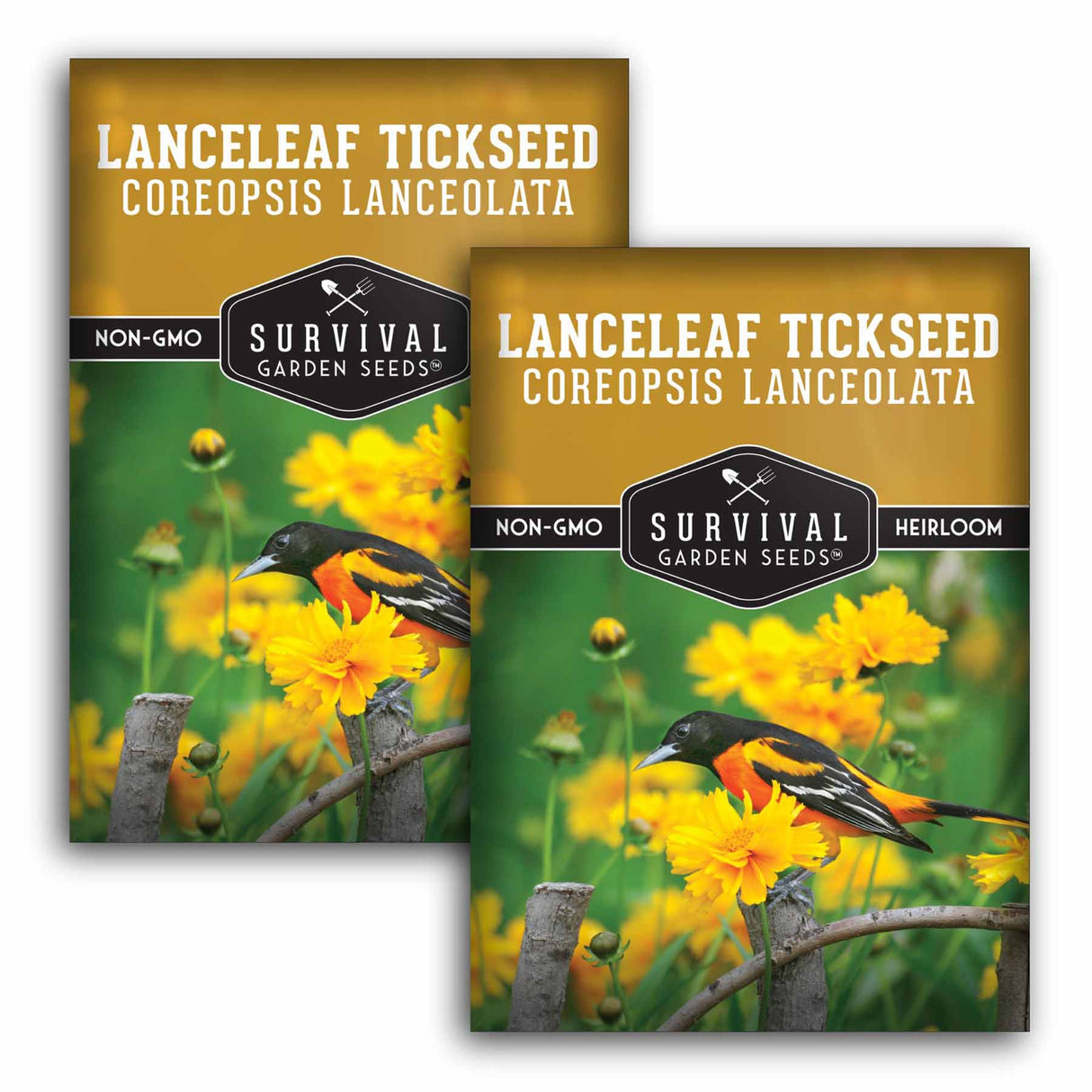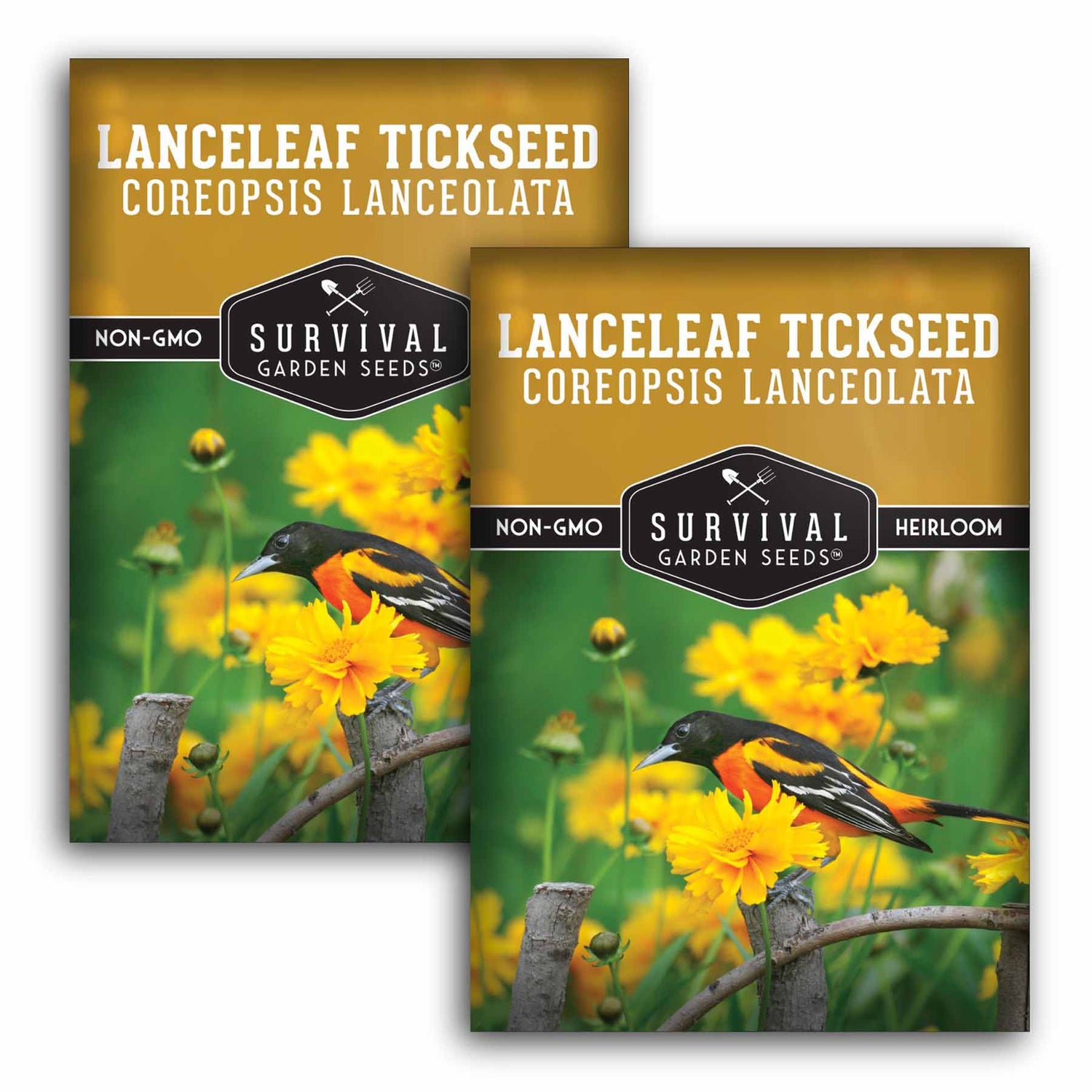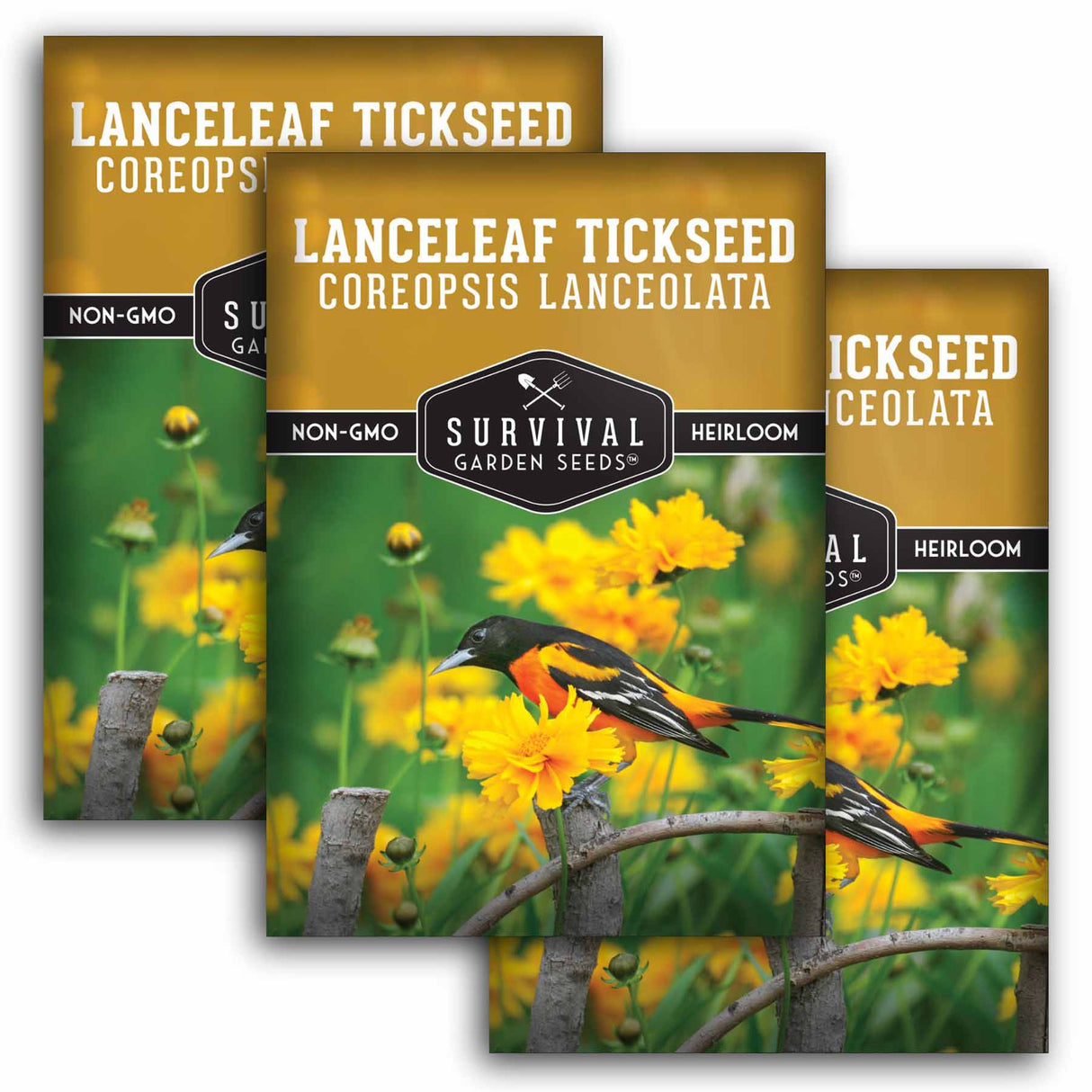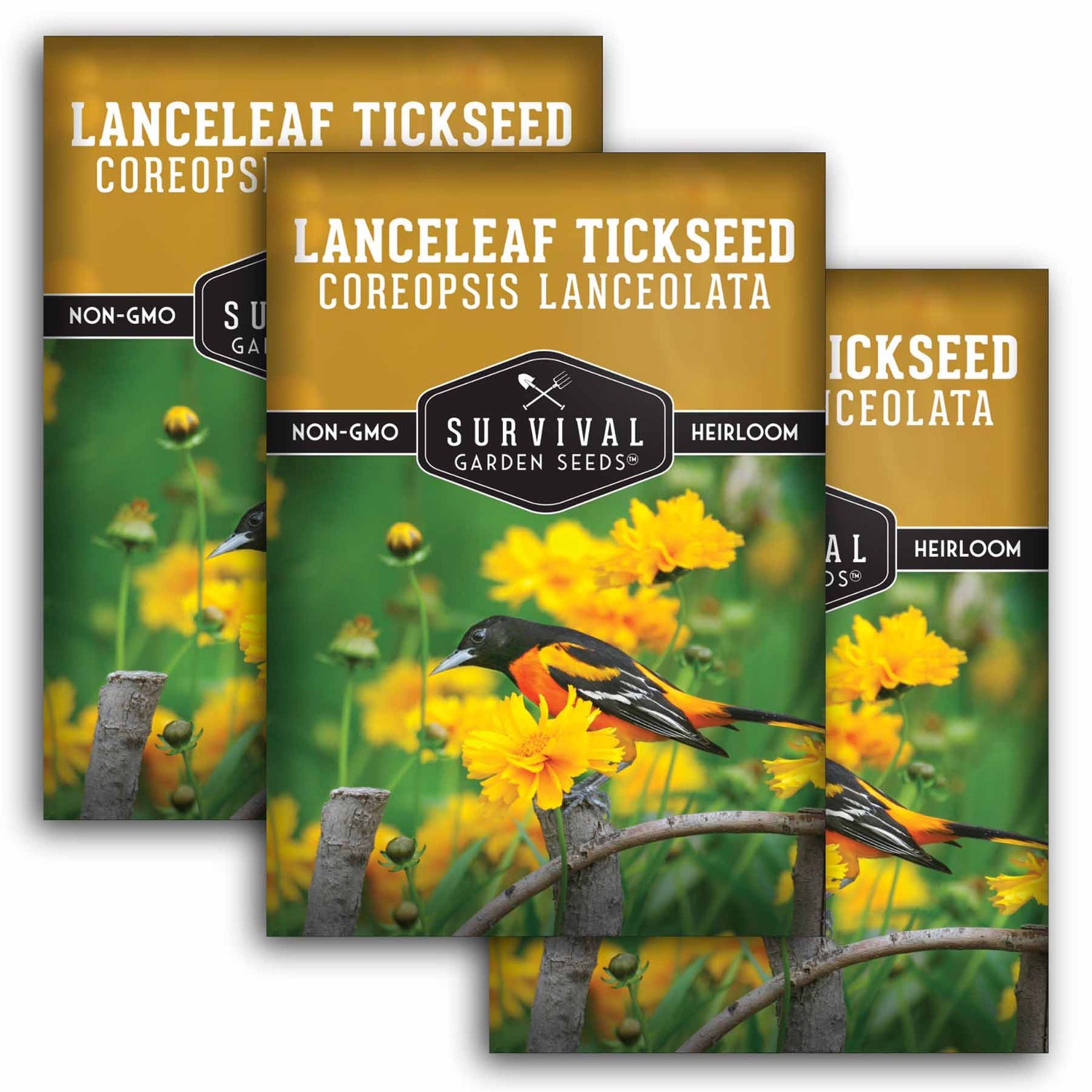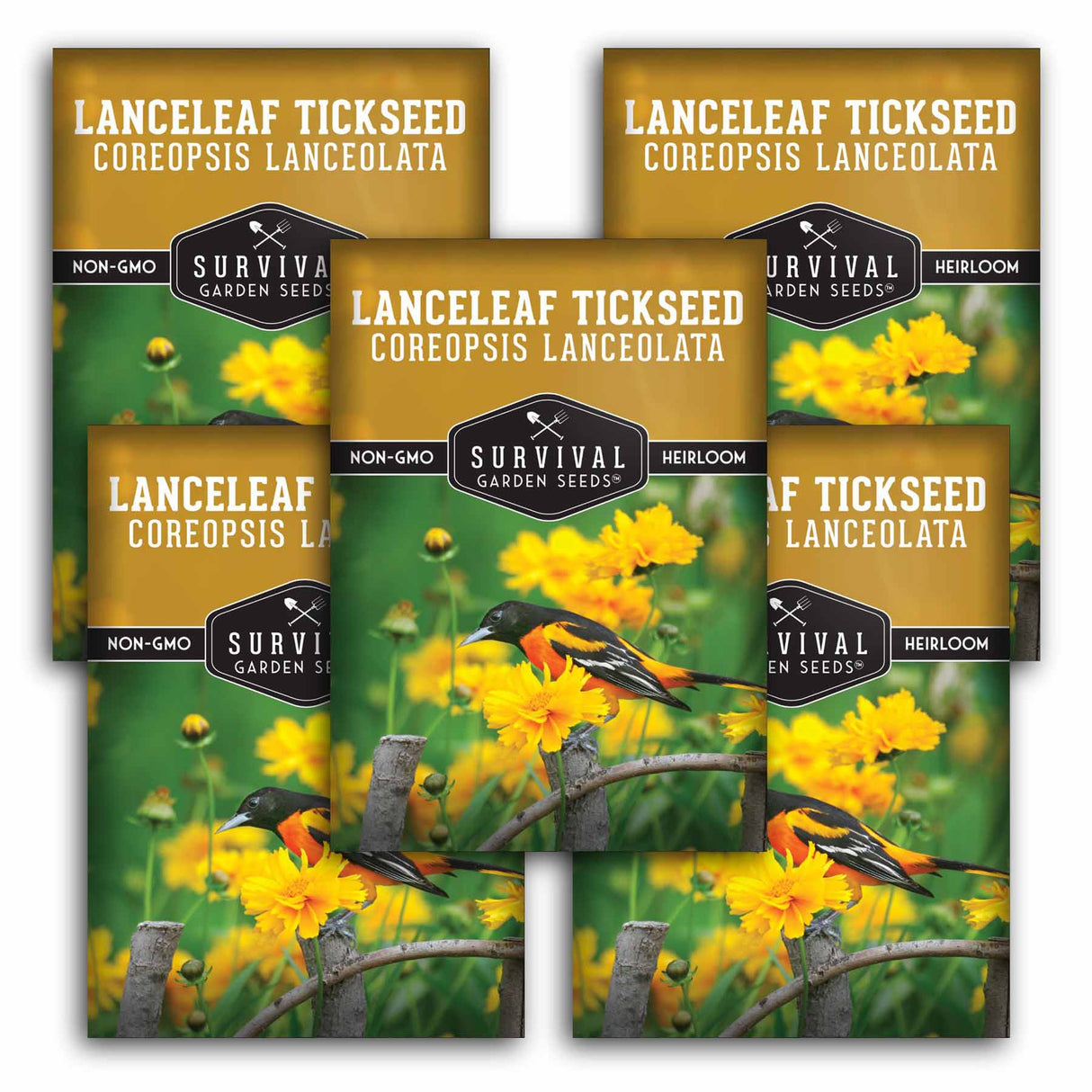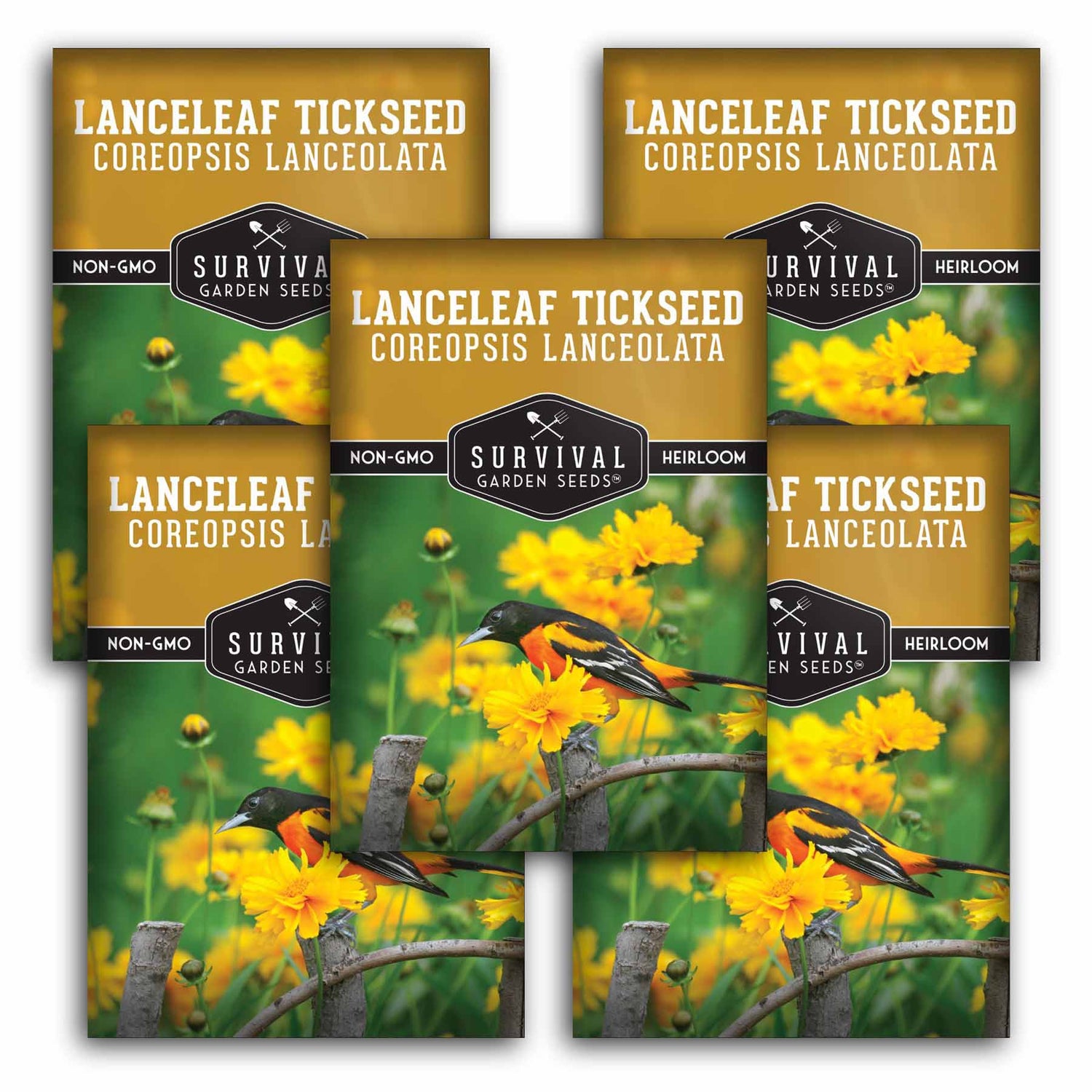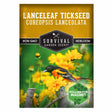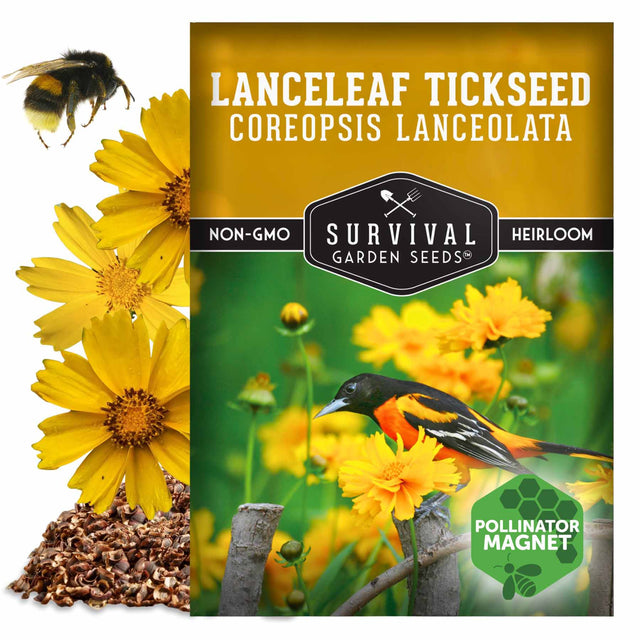Lanceleaf Tickseed Seeds – Native Perennial Coreopsis with Golden Yellow Blooms for Pollinators & Wildflower Gardens
Heirloom - Non-GMO - Reliable Germination
Lanceleaf Tickseed Seeds – Native Perennial Coreopsis with Golden Yellow Blooms for Pollinators & Wildflower Gardens - 1 Packet is backordered and will ship as soon as it is back in stock.
Couldn't load pickup availability
Bring long-lasting color and pollinator activity to your garden with Lanceleaf Tickseed Seeds, also known as Lance-Leaved Coreopsis. This cheerful native perennial produces masses of golden yellow, daisy-like flowers held above slender, lance-shaped foliage from late spring through summer. Its extended bloom time and easy-going nature make it a reliable choice for both cultivated gardens and naturalized landscapes.
Native across much of North America, Lanceleaf Tickseed establishes readily in a wide range of conditions, including poor or sandy soils. Once established, it spreads gradually through self-seeding and underground rhizomes, forming attractive drifts that return year after year with minimal care. Beyond its beauty, this dependable wildflower supports native bees, butterflies, and other beneficial insects while contributing to erosion control with its deep root system.
Reliable, Long-Blooming, and Pollinator-Friendly:
- Bright yellow blooms provide consistent color from late spring through summer
- Compact plants reach 1–2 feet tall, ideal for mixed plantings and borders
- Lance-shaped foliage adds texture even after flowering ends
- Gradually spreads for fuller displays without becoming aggressive
Why Customers Love Lanceleaf Tickseed:
- Native perennial that supports local ecosystems and pollinators
- Excellent drought tolerance once established
- Thrives in poor, sandy, or gravelly soils
- Ideal for meadows, prairies, cottage gardens, and restorations
- Self-seeding habit creates natural, evolving plantings
How to Use / How to Grow:
Sow Lanceleaf Tickseed seeds outdoors in fall or early spring, as seeds benefit from cold stratification for best germination. Plant in full sun and well-drained soil. Lightly press seeds into the soil surface without burying deeply. Keep soil lightly moist during establishment. Once mature, plants require little supplemental watering and minimal maintenance. Allow seed heads to mature if you want natural reseeding and expanded displays in future seasons.
Heirloom Native Plant Seeds
All of our seeds are open-pollinated, non-GMO, heirloom varieties with tested germination rates
Specifications
Specifications
-
Botanical Name
-
Seasonality
-
Planting Zones
-
Light
-
Soil Temp for Germination
-
Germination Time
-
Planting Depth
-
Plant Size
-
Growing Instructions
-
Seed Saving Instructions
-
Seed Count (approximate)
Payment & Security
Your payment information is processed securely. We do not store credit card details nor have access to your credit card information.
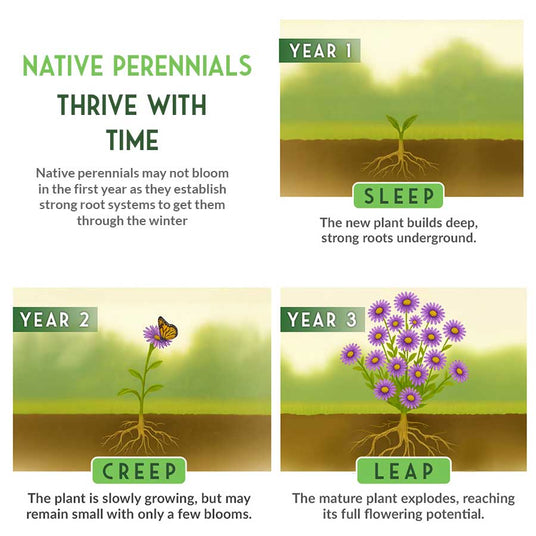
Native Perennials Are Worth The Wait!
Native perennials may not bloom in their first year. When planted from seeds, perennials put almost all of their energy into establishing strong, healthy root systems in the first year of growth. In the second year, you should see larger plants and some blooms. After the third year, you will be able to enjoy a bounty of beautiful blooms. Trust us! It will be worth the wait!
Cold Stratification Aids Germination
-
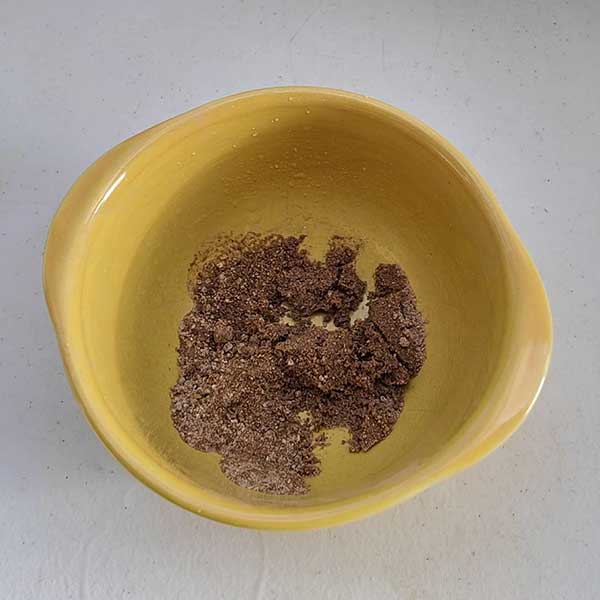
Step 1
Lightly moisten some clean sand. Make sure it is not too wet.
-
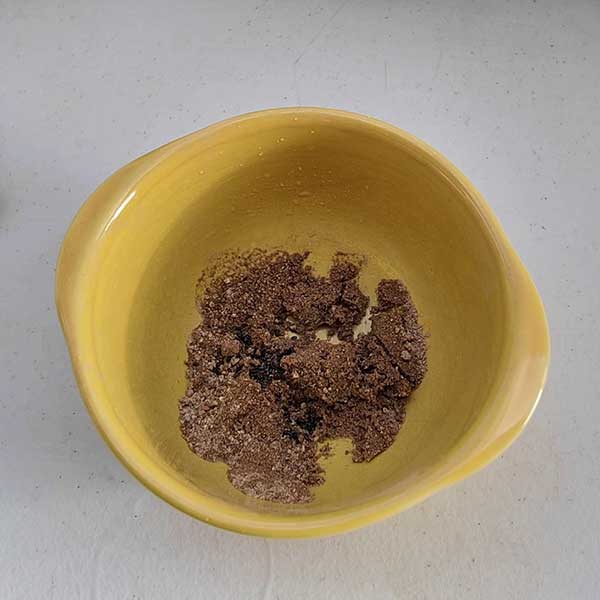
Step 2
Mix your seeds with the moist sand.
-
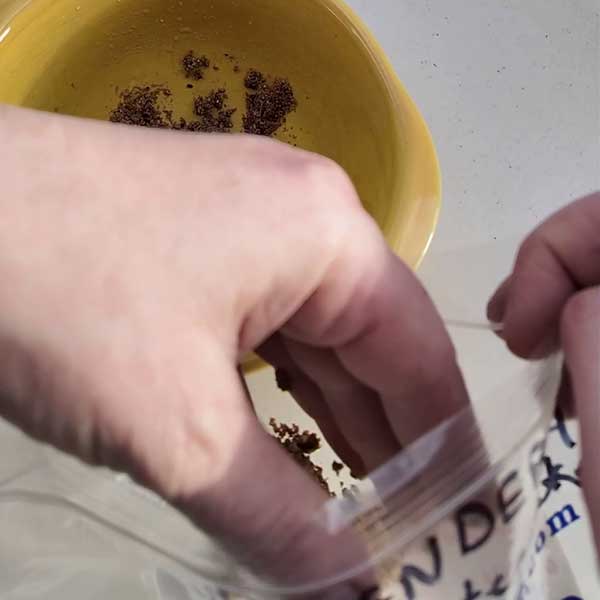
Step 3
Store your sand in an airtight container like a zip-top bag. Make sure to label and date your container.
-
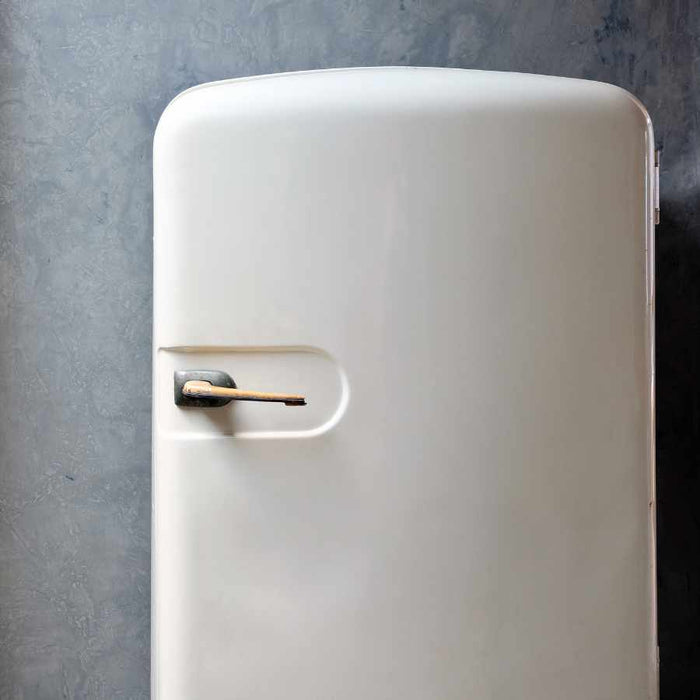
Step 4
Refrigerate your sand and seeds for 2 to 4 weeks (or more, depending on the information on your seed packet)
Support Native Habitats
- Supports Local Ecosystems and Biodiversity: Native plants are uniquely adapted to the local climate and soil conditions, forming the foundation of healthy ecosystems. They provide essential food, shelter, and breeding grounds for a wide array of native wildlife, including pollinators like bees and butterflies, birds, and beneficial insects, which helps to maintain and enhance local biodiversity.
- Requires Less Maintenance and Resources: Once established, native plants typically require significantly less water, fertilizer, and pesticides compared to non-native ornamental plants. Their deep root systems improve soil health and water penetration, reducing runoff and erosion, and their natural resistance to local pests and diseases minimizes the need for chemical interventions, saving time, money, and environmental impact.
- Contributes to Climate Resiliency and Conservation: By supporting a healthy native plant community, you are helping to create more resilient landscapes that can better withstand the impacts of climate change, such as extreme weather events. Growing native plants also plays a crucial role in conserving local plant genetics, preserving the natural heritage of a region, and providing critical habitat corridors for wildlife facing habitat loss.
- Detailed Growing Information: Paper seed packets include clear planting instructions, germination tips, and seed-saving info, great for beginner or experienced gardeners growing vegetables, herbs, flowers, or native plants.
- Trusted USA Seed Company: Family-owned business providing heirloom, non-GMO, open-pollinated seeds; always fresh, untreated, rigorously tested, and expertly packed for long-term storage and gardening success across all experience levels
Frequently Asked Questions
Are your seeds heirloom and open-pollinated?
Are your seeds heirloom and open-pollinated?
Yes. All of our seeds are heirloom, open-pollinated varieties, which means they can produce seeds that grow true to type and are suitable for seed saving.
You can learn more about open-pollinated, heirloom, and non-GMO seeds in our Survival Garden Training blog.
Are your seeds non-GMO?
Are your seeds non-GMO?
Yes. All Survival Garden Seeds are 100% non-GMO. Our seeds are open-pollinated heirloom varieties and are never genetically modified.
Are your seeds treated with chemicals?
Are your seeds treated with chemicals?
No. Our seeds are completely untreated and free from chemical coatings, fungicides, or synthetic treatments.
How do I know my seeds are fresh?
How do I know my seeds are fresh?
Every seed packet includes a packed-for date, and we germination-test each seed lot before packaging to ensure high viability.
What is the shelf life of your seeds?
What is the shelf life of your seeds?
Most seeds remain viable for 3 to 5 years or longer when stored properly in a cool, dry place away from light and moisture.
In what USDA hardiness zones can I grow your seeds?
In what USDA hardiness zones can I grow your seeds?
Our varieties are selected to grow successfully across USDA Hardiness Zones 3 through 10. Each packet includes variety-specific planting guidance and germination tips.
